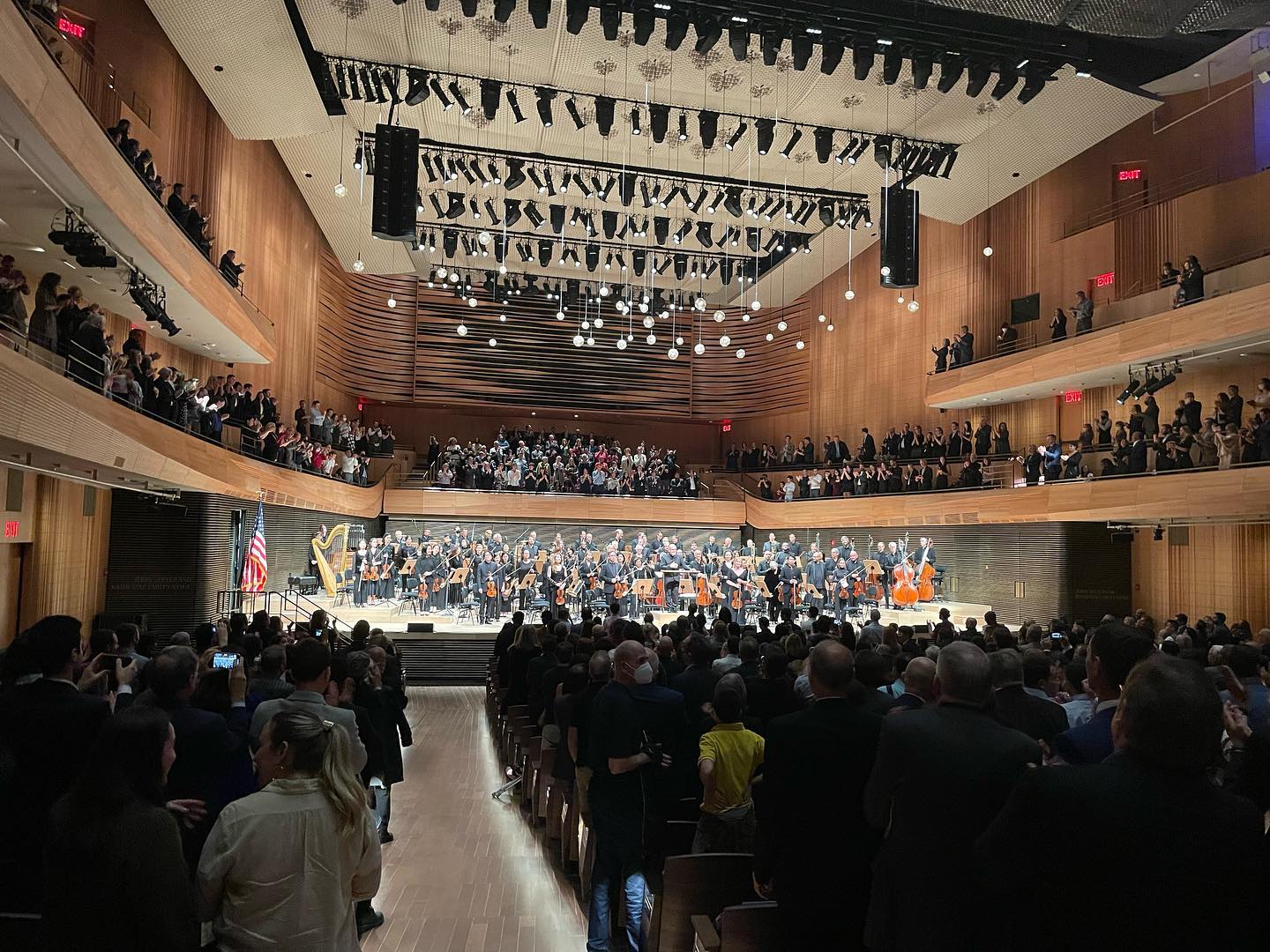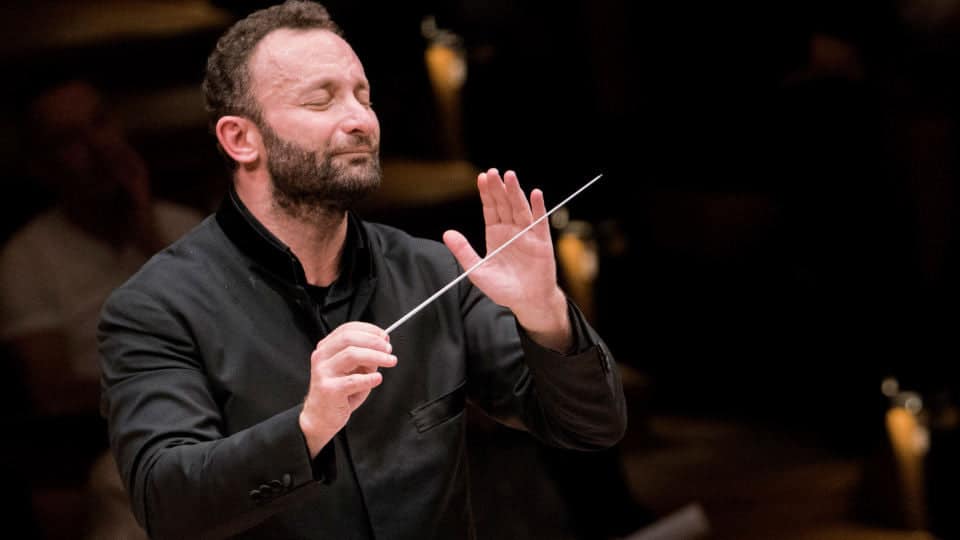Leonardo’s instrument? No, it’s a reproduction of an obscure German contraption
mainThere has been much press hooh-hah about a bowed keyboard instrument imagined by Leonardo da Vinci and built by an enterprising Pole. But does it pass the acid test of musicology? Apparently not. Here’s a response to the American Musicological Society Discussion List from Professor Edmond Johnson in Los Angeles. Sorry, folks.
I hesitate to represent myself as any sort of expert in the history of bowed
keyboard instruments, but I think I can probably answer Prof.
Warfield’s question about “Leonardo da Vinci’s Wacky Piano.” Basically, it
appears that the instrument built by S?awomir Zubrzycki is not so much a
realization of a design by Leonardo da Vinci as it is a reconstruction of
the instrument described as a “Geigenwerk/GeigenInstrument, oder
GeigenClavicymbel” in the second volume of Michael Praetorius’s Syntagma
Musicum (pp.67-72). Praetorius credits the instrument’s invention to Hans
Haiden of Nuremberg (who had apparently built a working model as early as
1575), and a woodblock illustration of a “Nürmburgisch Geigenwerk” can be
found in Praetorius’s Theatrum Instrumentorum.

To my knowledge, only one historical example of this type of instruments
survives—a 1625 Spanish instrument by Raymundo Truchado in the collection
of the Musical Instruments Museum in Brussels—but there have been previous
attempts at making modern replicas (including four different instruments by
the Japanese builder Akio Obuchi).
Now it’s certainly true that da Vinci made some sketches of a
continuously-bowed keyboard instrument (which he dubbed the “viola
organista”) , but the sketches are pretty rough, and most of them show an
action that’s quite different from the one in Zubrzycki’s instrument (which
uses the same rosin-coated wheels as Haiden’s geigenwerk). In short,
Zubrzycki’s instrument seems to me to be a nice reconstruction of a
16th-century German instrument that just happens to share some of the
characteristics of da Vinci’s imagined “viola organista” (which Haiden
almost certainly knew nothing about).
While I wouldn’t go so far as to call it “a circus sideshow looking for
suckers,” I think it’s safe to say that the idea of a long-lost instrument
by Leonardo da Vinci makes for far better headlines than “Instrument by
Obscure German Reconstructed… Again.”
Best,
Edmond Johnson
P.s. You can find some reproductions of the da Vinci sketches in Emanuel
Winternitz’s “Strange Musical Instruments in the Madrid Notebooks of
Leonardo da Vinci,” Metropolitan Museum Journal 2 (1969), pp. 115-126.





This is a slightly edited version of an email sent by Dr. Johnson to the AMS list – I’m not sure that it was intended as a public statement.
Beautiful sound, none-the-less. It is more organ-like than I expected. A whammy bar for some vibrato would be a useful addition.
Ed’s first name is Edmond, not Edward.
In the Youtube video Zubrzycki mentions both Praetorius and Heiden and is familiar with the various German terms, but it seems that the first spark that ignited his imagination were Da Vinci’s drawings and description and that he discovered those sources later on. I didn’t get the impression that his was supposed to be replica of an early 16th century instrument, certainly not with that range and design. http://www.youtube.com/watch?v=gOrn_z9m9lU (English subtitles are available).
I don’t mind it in any version, because it gives me opportunities to proselytize about the viola da gamba. @robcat2075, this instrument is similar in sound to the viola da gamba (viol), which is a fretted bowed string instrument that doesn’t use much vibrato. The frets make it sound as if each note is an open string, vibrating off a hard nut instead of a fleshy finger. Sure, you could have more vibrato, but I think you’d take away a lot of that “early” sound.
The maker knows his stuff, and covers the above info in this youtube interview…
click captions for subtitles… it’s in Polish
http://www.youtube.com/watch?v=gOrn_z9m9lU
I don’t mind the accuracy fetish presented in this little “disclaimer” note. Thing is, anyone who knows about instruments is familiar with Praetorius and his menagerie of strange ones. And we all, in listening to this, think of the German references. Headlines are headlines and as suggested, Da Vinci is code for attention! The main thing is that this is a beautiful sounding creature played very well. SO, preface this article with that most important fact, and the fact that the 17th and 16th century are as rich in beautiful sonorities as Berlioz and Liszt, and Im ok with it. Otherwise, this piece of writing just throws water, not on a dangerous fire but on a splendid passion.
There is purism and then there is purist foolishness.
The Geigenwerk has been lost to music lovers for centuries. The Japanese builder, Akio Obuchi has made some valiant attempts but I have to say, they are painful to hear.
When I first heard Zubrzycki’s instrument I was floored. I am sure he is using some very careful recording to get such a clear tone (no mechanical noise in what is essentially a hurdy-gurdy? How does he pull that off?) but only a very small minded person would look at and hear his instrument and then complain because it isn’t “pure DaVinci”.
Yes, calling it a DaVinci instrument is a bit of a stretch, but come on, NONE of his instrument designs will work! Obuchi sort of demonstrated that! And the name is the best marketing approach Zubrzycki could ever hope to use. We live in an age of glitz and branding. The DaVinci brand is a seller.
But most importantly is what Zubrzycki has achieved.
He designed and built an exquisitely beautiful keyboard instrument, based on very old designs, inspired by possibility and beauty – things all musicians hope to achieve in their work, and opened a whole new chapter in keyboard instrumentation. Please, give the man some credit for a brilliant achievement!
One should take into account that Zubrzycki has also developed a new keyboard playing style. I sincerely doubt that his Viola Organista can be played using piano and harpsichord technique!
So not only has he resurrected a lost musical instrument but he has added to the keyboard repertoire. That’s a great achievement no matter if he calls it DaVinci or Geigenwerk.
The result is the same – our musical world has been broadened – oh hell, it has been ROCKED!